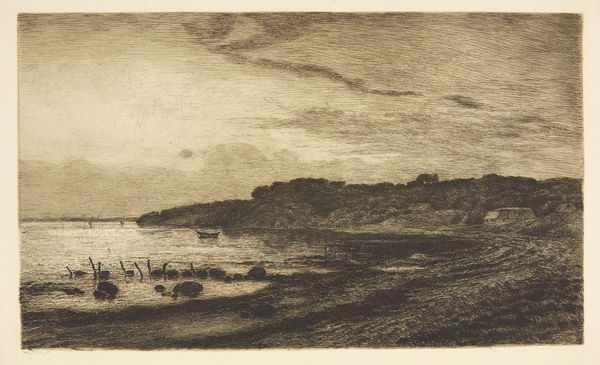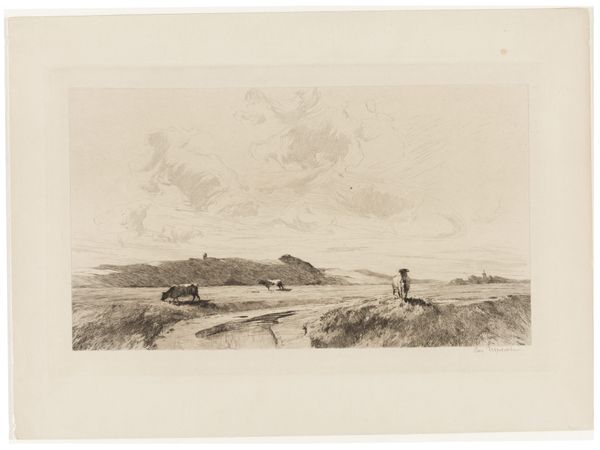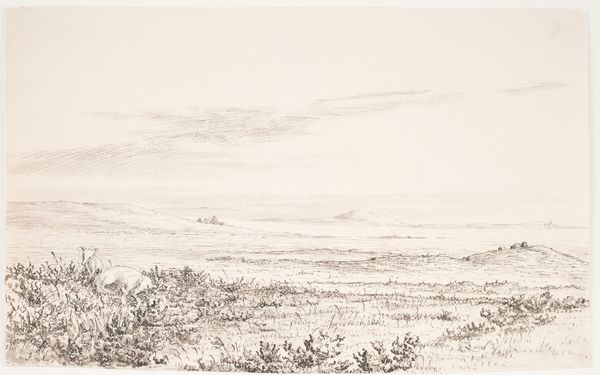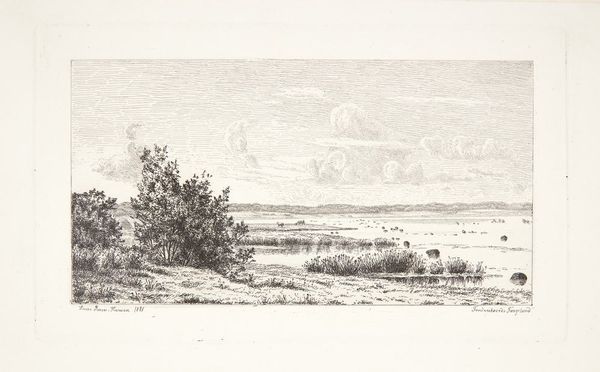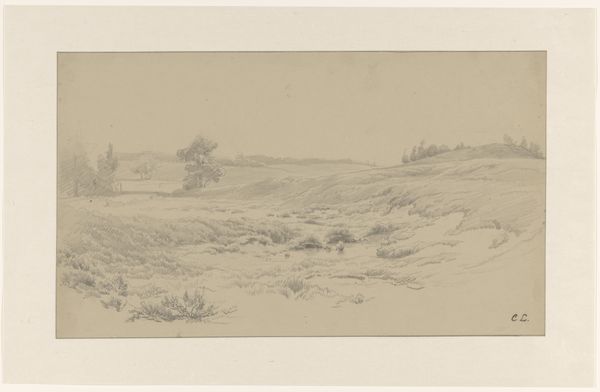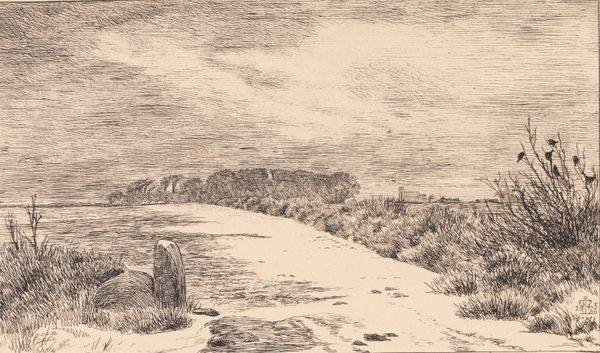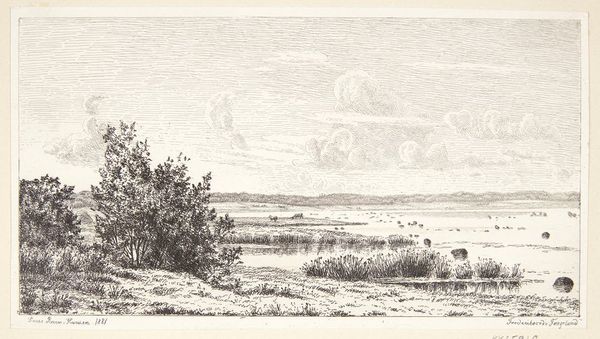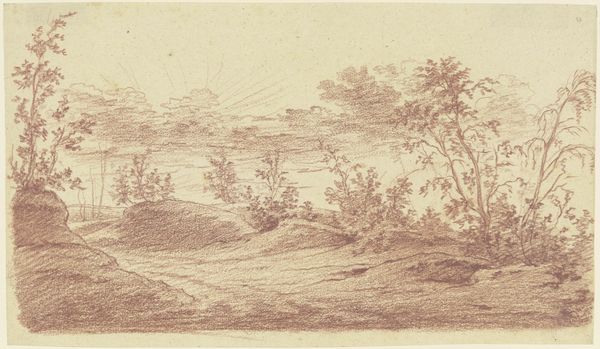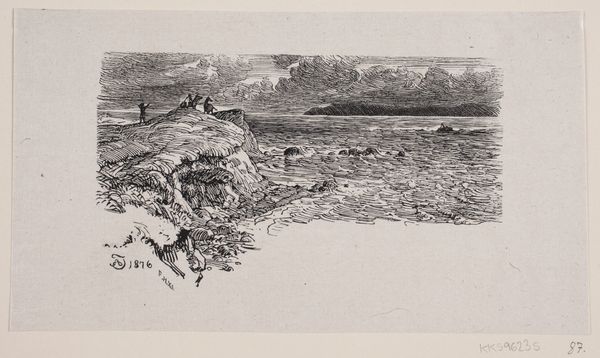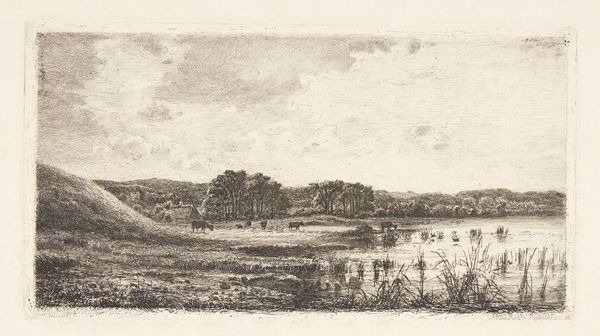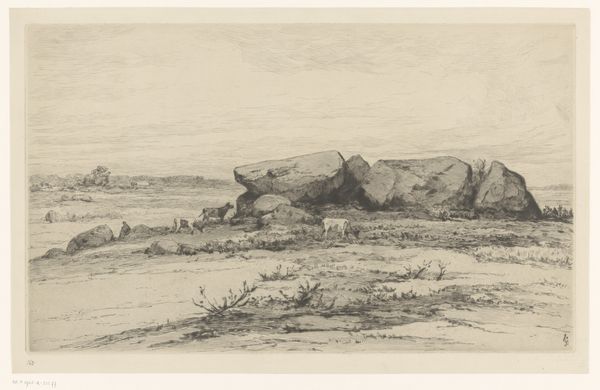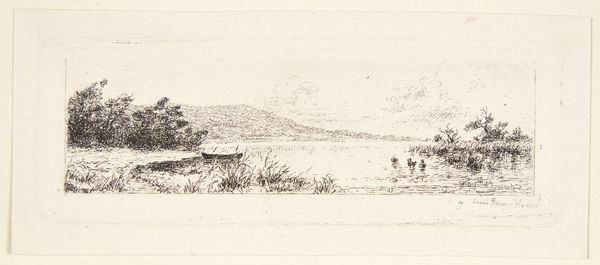
print, etching
# print
#
etching
#
landscape
#
realism
Dimensions: 187 mm (height) x 281 mm (width) (plademål)
Editor: Here we have Louise Ravn-Hansen's etching, "Mols," from 1890. It's a realistic landscape...I’m really drawn to the texture, the layering of lines to create depth. What stands out to you? Curator: The etching process itself is key here. Think of the labor involved—the artist meticulously coating the plate, scratching the image into the wax, the bite of the acid. Consider also the social context. Who had access to these materials, to this technology, and what kind of landscapes were they compelled to represent? Editor: So, the *act* of making it is important... It is very different from a drawing, for example. Curator: Exactly. The print allows for reproduction and distribution. This becomes a means to potentially democratize the image, shifting it away from unique precious objects. But then, we must also consider who the audience for these prints would have been. Were they affordable? Did they contribute to an existing market for landscape imagery that upheld particular social or political ideologies? Editor: I didn't think about prints being… almost political! Are the materials of the time impacting this piece as well? Curator: Indubitably. The specific types of acids available, the paper quality, even the tools used to create the etching would impact the final product and its reception. Editor: This has given me a new perspective about the material conditions around a piece, the way art is produced, who made it, and how. Thanks. Curator: Indeed. By examining these elements, we start to unravel the complex relationships between artistic production, consumption, and social values in 19th-century Denmark.
Comments
No comments
Be the first to comment and join the conversation on the ultimate creative platform.
